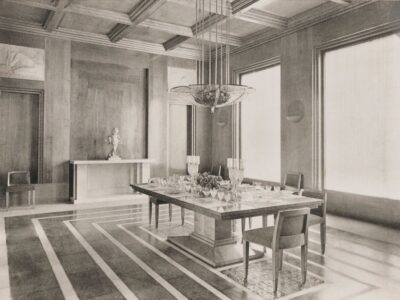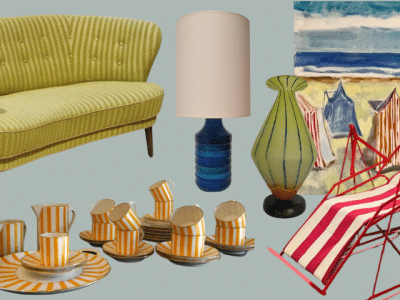Pictured below is a 19th-century folding Savonarola armchair made in India during the British colonial period. Carved from warm-hued wood, the chair features an intricate back rail depicting twin peacocks and is decorated with an abundance of inlaid bone, mother of pearl, ebony and mixed woods. The arms of the chair are carved in the shape of leopards, and delicate vine patterns run up the sides of the chair.
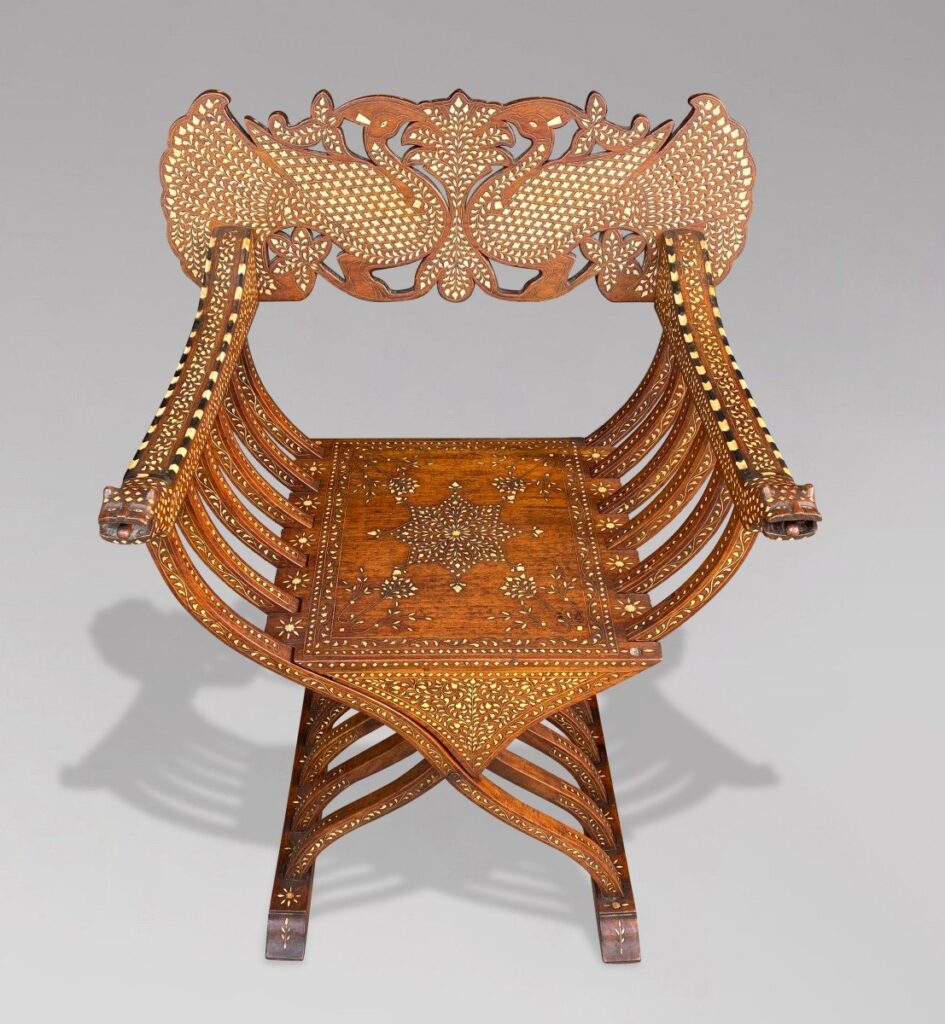
19th century Indian folding Savonarola armchair. © Anthony Short Antiques
Savonarola chairs are a unique type of folding chair named for such a chair that was owned by the Italian Dominican friar Girolamo Savonarola. The “x” design of a Savonarola chair’s frame, made by interlacing curved slats that pivot at their intersections, allows it to be easily dismantled and folded flat for ease of storage and transportation. Because of their portability, such chairs were often used for campaigns and outdoor events. While the style first arose out of the Italian Renaissance, its convenience allowed it to quickly spread across the continents.
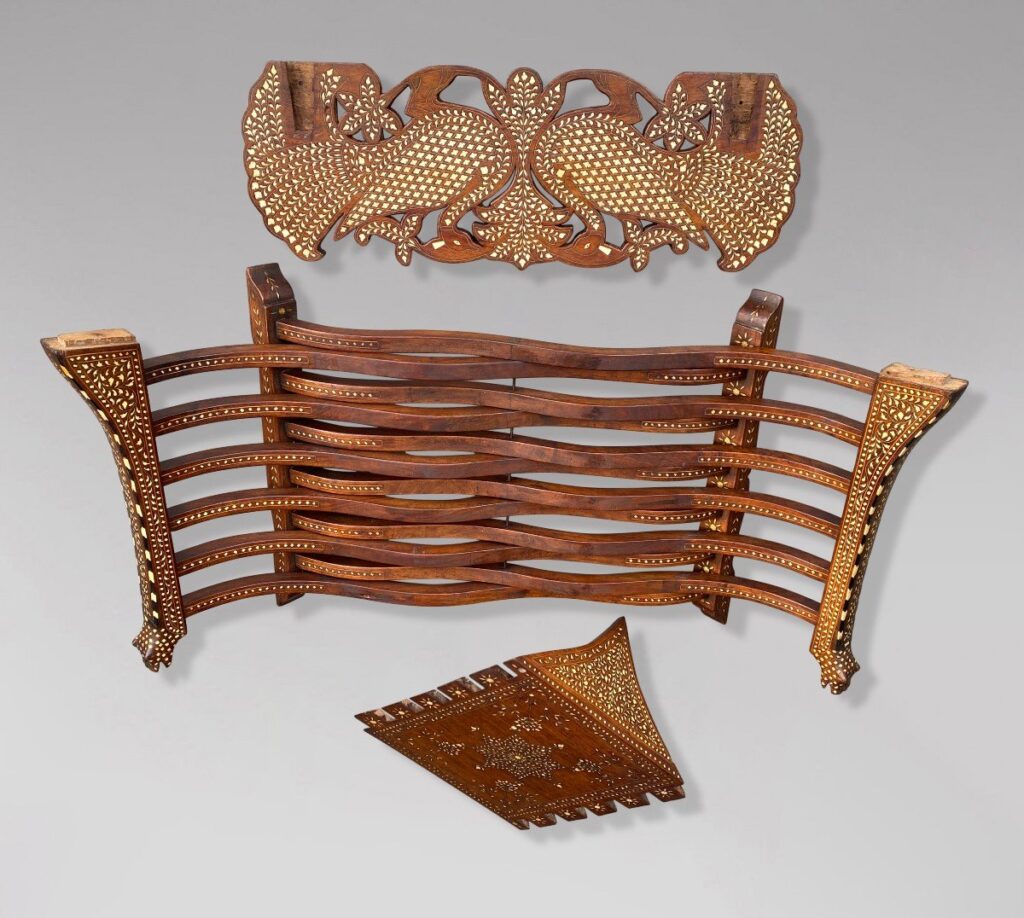
19th century Indian folding Savonarola armchair, dismantled. © Anthony Short Antiques
This chair provides an excellent example of the types of cultural diffusion that occurred before and during the colonial period, as European designs and aesthetics were brought into India and vice versa. “Exotic” Indian designs became very popular with the British elite both in India and in their home countries due to their rich, elaborate designs. Indian carpentry often featured complex carvings and dense inlaid mosaics that felt exceptionally opulent to European customers. Many pieces like this Savonarola armchair were created for British occupiers or for export to England itself.
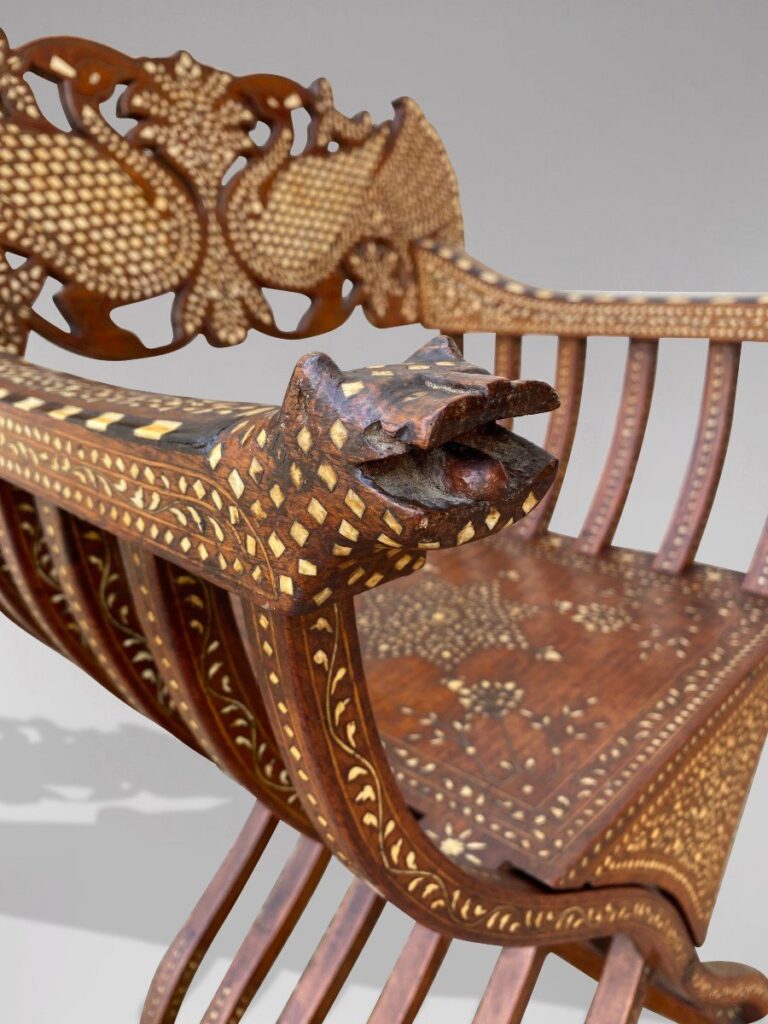
19th century Indian folding Savonarola armchair, close-up of carvings and inlays. © Anthony Short Antiques
Indian Woodworking
Indian carpentry has deep historical roots that date back thousands of years. From the intricate carvings of ancient temples to the beautifully crafted furniture of the Mughal era, India has a long-standing tradition of woodworking. Wood has always been a valuable resource in India, with various regions offering diverse types of timber such as teak, rosewood, and sheesham. These materials were used to create stunning architectural marvels, furniture, and art objects.
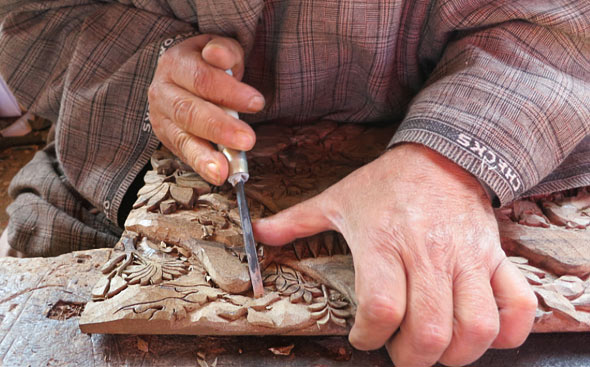
Kashmiri artisan carving walnut wood. © Gaatha
Carpentry styles in India is closely tied to culture and tradition that reflect talents and taste of the local people. Each region has its unique style and techniques, such as the the filigree work of Gujarat, or the exquisite inlays and carvings work of Kashmir. Indian carpenters often draw inspiration from mythology, nature, and daily life, resulting in intricate and meaningful designs.
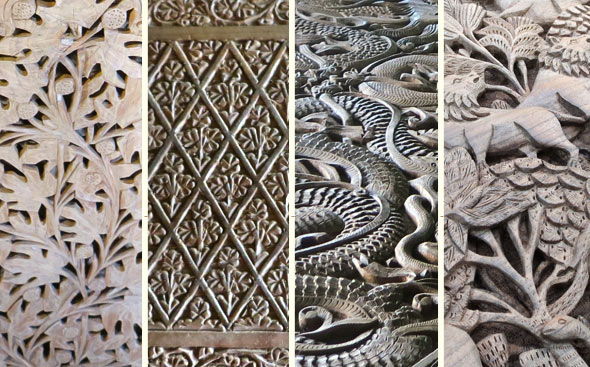
Various cared motifs by Kashmiri artisans in walnut wood.© Gaatha
Time-Honored Techniques
Indian carpentry is renowned for its exceptional craftsmanship and attention to detail. Artisans use time-tested techniques that have been passed down through generations. There are several key characteristics which have led to it being so highly prized by European collectors.
Hand-Carved Designs: Skilled carpenters meticulously carve intricate patterns and motifs by hand, often showcasing traditional Indian themes like floral patterns, animals, and religious symbols.
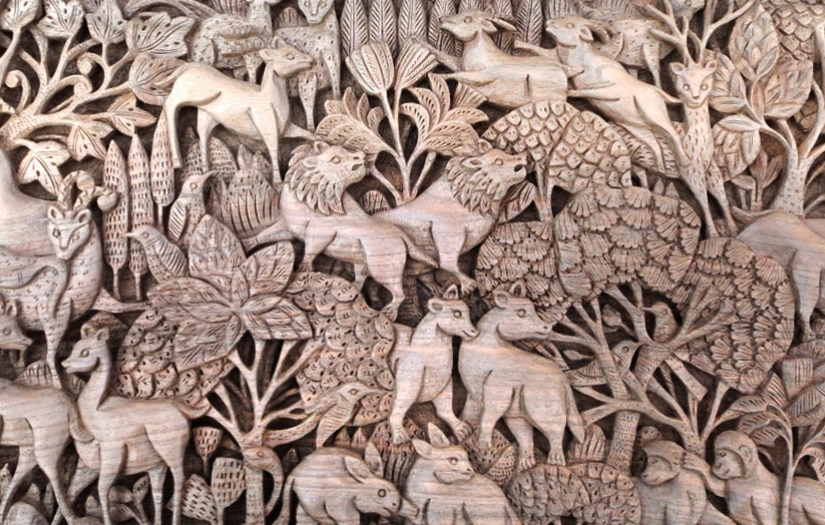
Animal and plant motifs carved into walnut wood. © Gaatha
Inlay Work: Inlay is a common technique used in Indian carpentry, involving the insertion of contrasting materials like bone, mother of pearl, or colored wood to create stunning patterns and designs.
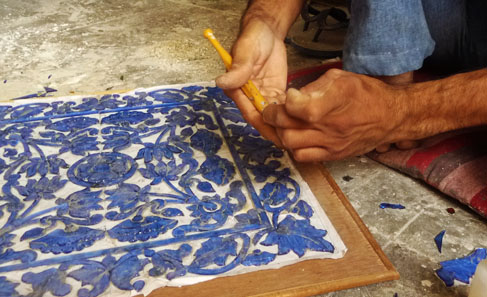
An artisan laying floral motifs in blue stone. © Gaatha
Wood Joinery: Traditional joinery methods such as dovetail joints and mortise and tenon joints are used to ensure durability and longevity.
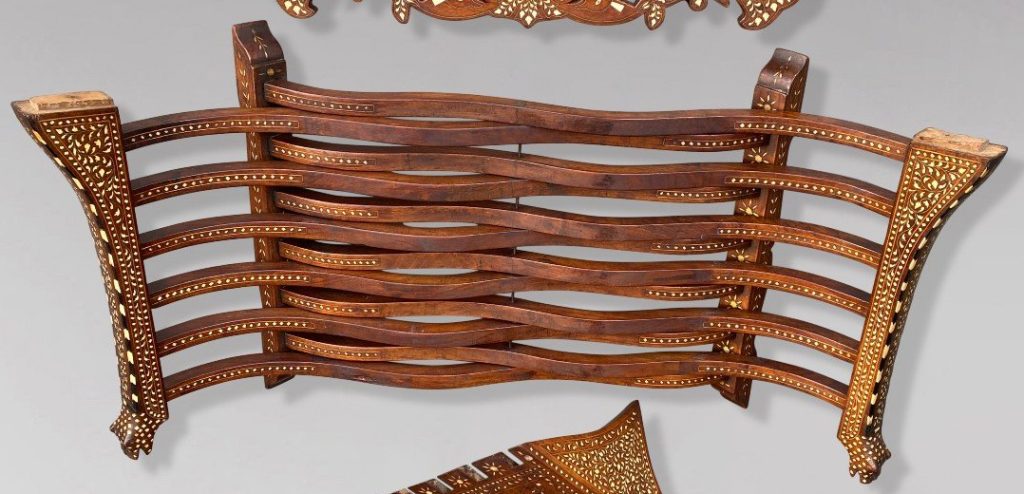
Joints of the folding chair shown above. © Anthony Short Antiques
Finishes: Artisans employ various finishing techniques, including lacquering, polishing, and staining, to enhance the natural beauty of the wood and protect it from the elements.
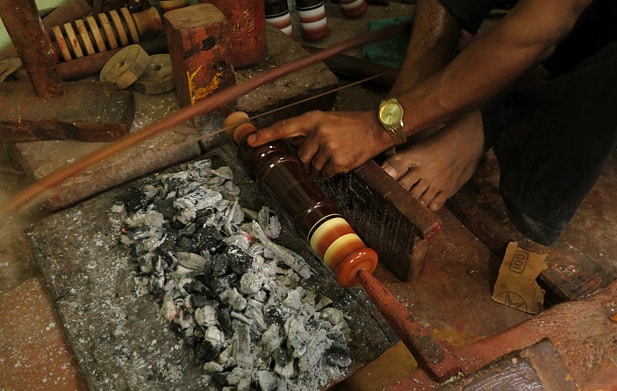
A resin lacquer being applied to wood. © Gaatha
Influence of the European Market
The export of Indian carpentry to Europe can be traced back to the colonial era when European powers established trading posts and began to import Indian goods, including furniture and decorative woodwork. Portuguese explorer Vasco da Gama’s voyage in 1498 opened up the sea route to India, setting the stage for European colonization. Soon after, other European powers like the Dutch, English, French, and Danish followed suit, establishing trading posts and fortifications along the Indian coastline. One of the primary motives for European colonization in India was economic. The lure of spices, textiles, precious metals, and the work of talented craftsmen prompted these powers to establish a presence in the subcontinent. India was renowned for its wealth and prosperity, making it an attractive destination for European traders.
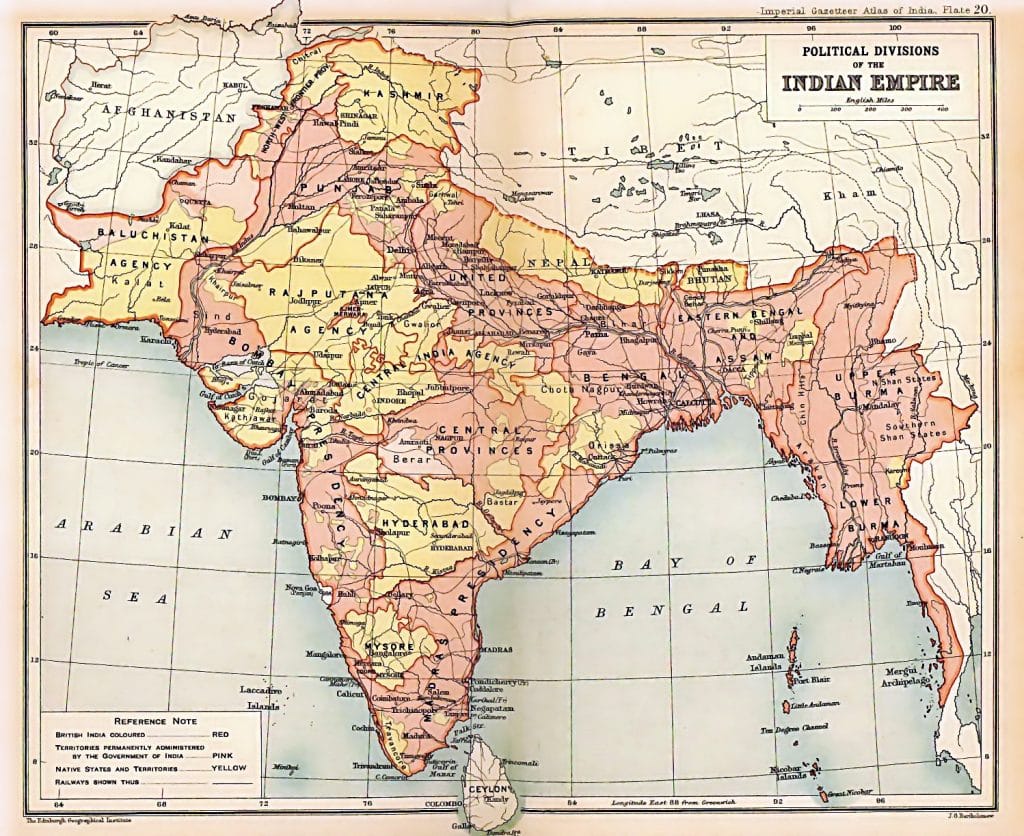
Political subdivisions of the Indian Empire in 1909 with British India (pink) and the princely states (yellow). Edinburgh Geographical Institute (public domain)
As various European nations vied for supremacy in the Indian Ocean, they engaged in intense competition to establish their dominance over Indian territories. This competitive spirit led to the colonization of different regions by different powers. However, it wasn’t until the 18th and 19th centuries that Indian carpentry gained widespread recognition in Europe. The British fascination with Indian craftsmanship during the Victorian era led to a surge in exports of Indian furniture, artifacts, and architectural elements.

Queen Victoria and her Indian servant Abdul Karim, 1893. CC
British Occupation of India
The British occupation of India was a significant period in world history that lasted for nearly two centuries, starting from the mid-18th century. During this time, the British East India Company and later the British Crown exerted substantial control over India, fundamentally transforming its socio-economic, political, and cultural landscape. India officially became a colony of the United Kingdom under the authority of the British crown in 1858, and remained a colony until it was finally emancipated in 1947. Even before this period, rule of the Indian subcontinent had been fought over by various European powers who sought to monopolize India’s resources and trade. Indian decorative goods became very popular in the West due to their foreign beauty and intricacy, particularly during the Victorian Period (1837-1901). The occupation of India had a major influence on the rise of Orientalist aesthetic preferences, which would come to dominate the taste of European elites. Import of beautiful woods from England’s other colonies also contributed to the growth of the carpentry industry in India.
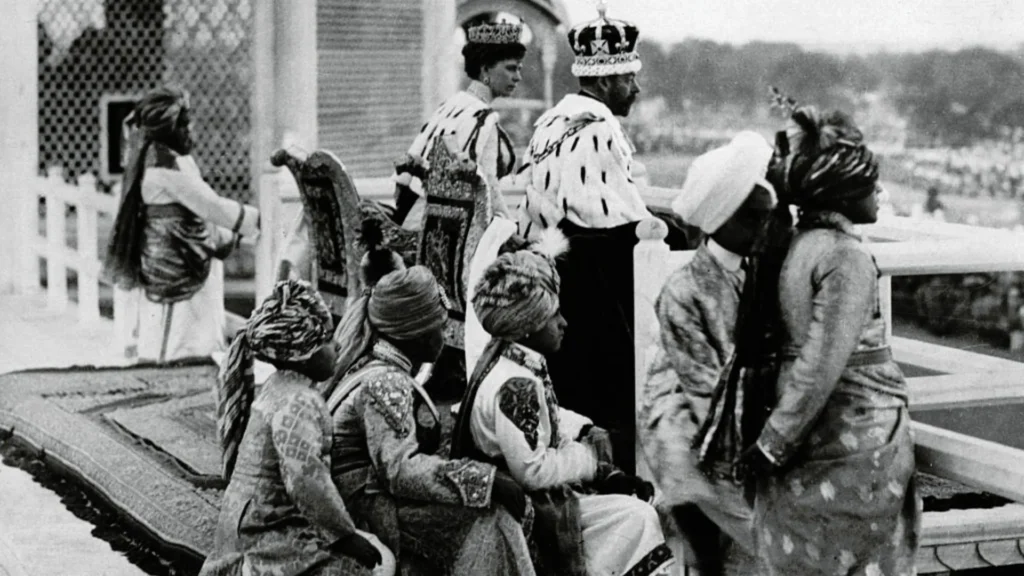
Coronation of George V in India, 1911. CC
Intricate Ornementation
Here we see another example of Indian carpentry that made its way to Europe. Also created during the colonial period, this brass mounted hardwood chest once again highlights Indian carpenter’s intense attention to detail and the characteristically complex patterns used to adorn these pieces. Detailed geometric arrays are formed by the inclusion of brass studs and plates on the stained wooden surface of the chest, providing great visual interest.
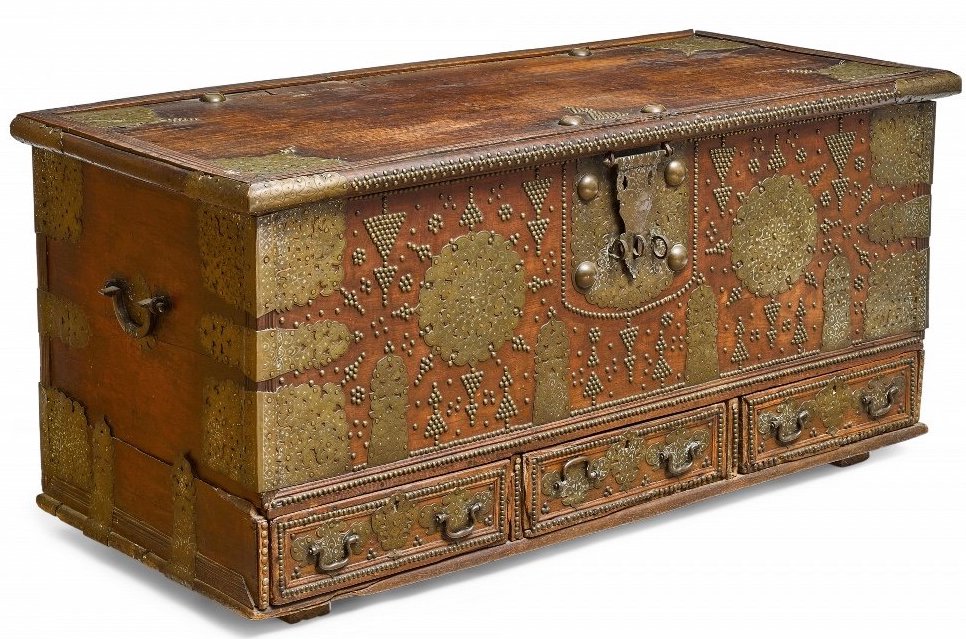
19th century Indian brass mounted hardwood chest. © Doyen’s LLC
This 19th-century carved rosewood dresser further highlights the incredible craftsmanship of Indian carpenters, particularly their skill in carving. Carved vines, flowers, and animals are outlined in exquisite details. The dense, winding designs of this highly sculptural piece speak volumes about the rich tradition of carpentry in India that made such pieces so highly sought after in the West.
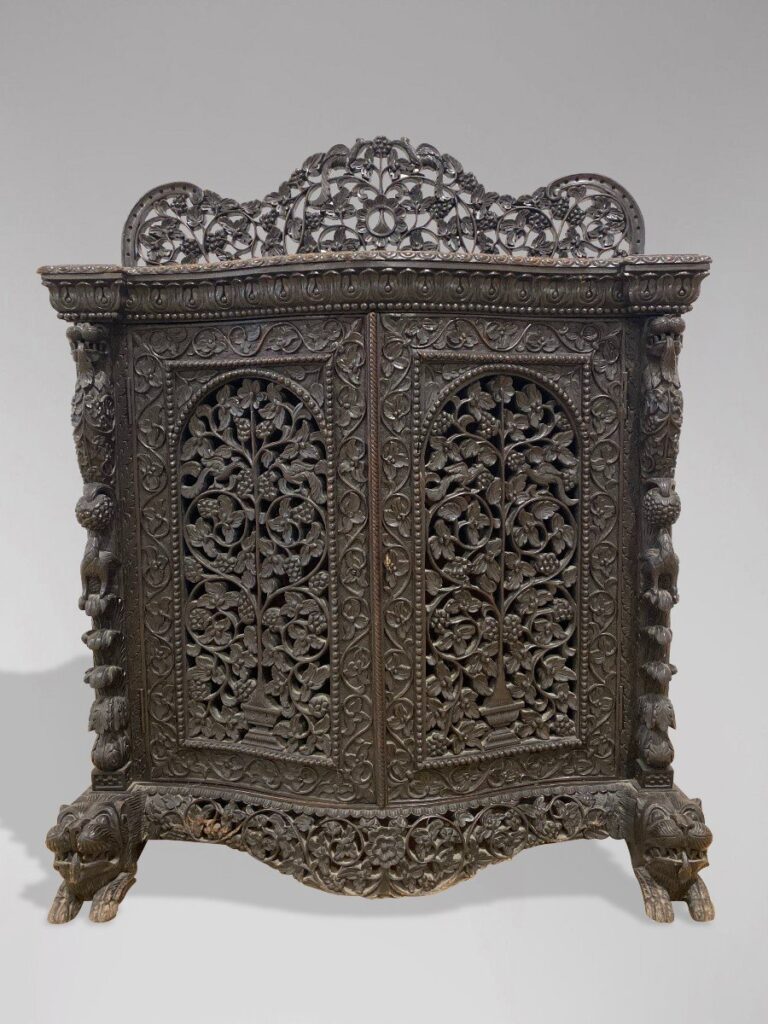
19th century colonial Indian carved rosewood dresser. © Anthony Short Antiques
Indian carpentry is still a highly valued craft, even today. The intense effort and skill required to create such intricate pieces by hand imbues them is a value that cannot be found in mechanically mass-produced furniture. These pieces reflect the spirit and passion that has been passed down through generation after generation of Indian artisan, a proud testament to their endurance and creativity.
You May Like
Anglo-Indian & Anglo Indian Antiques | Indian Rosewood | Indian Doors & Wood | Orientalism | Colonial Furniture & Arts | Antiques From India | Victorian Decorative Arts




